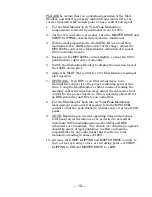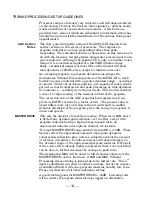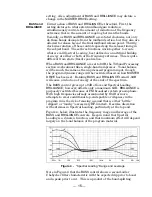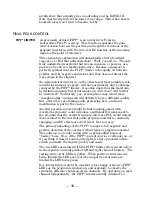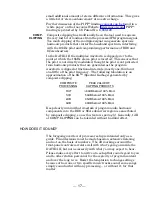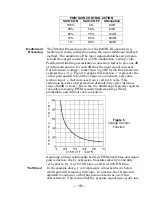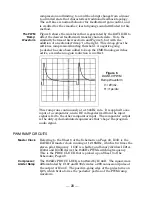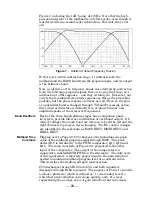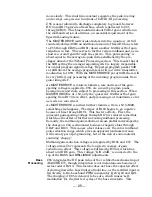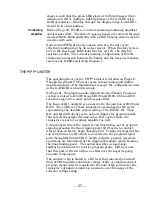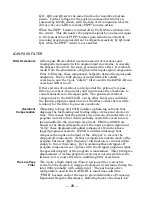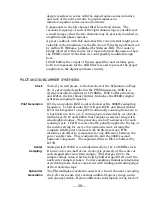
14
TRIBAND PROCESSING SETUP GUIDELINES
Processor setup is obviously very subjective and will depend entirely
on the station s format, the desired sonic signature, and the needs,
wants and whims of various station personnel. A few hints are
provided here, some of which are redundant to information that has
already been given with the identification of the various front-panel
appointments.
AGC Section
Notes
The slow, gain-riding AGC action of the
DAVID-III
departs from
earlier versions in this series of processors. The response to
program material is average-responding rather than peak-
responding. The rationale behind our about-face on this issue has to
do with the tendency toward greater and greater processing of music
source material. Although the popular CD is only a consumer music
format, it is nonetheless capable of a full 90dB dynamic range.
Sadly, a statistical analysis of most CDs on the market will show
total dynamics of 20dB or less, except for fade-ins and -outs.
An averaging response to program dynamics encourages the
downstream Triband Processing section of the
DAVID-III
to work
harder on source material with a greater dynamic range as indeed
it should. Under our previous position, pre-squashed music would
get just as much compression and peak processing as wide-dynamics
live announce certainly more than it needs. This would constitute
a case of overprocessing of the musical content of the program.
The correction rate of the AGC stage has been speeded-up from
previous
DAVID
versions by a factor of four. The present value is
about 2dB/second, just a bit slower than would result in audible
dynamic alteration of the program, given the
averaging
response to
music and speech.
MASTER DRIVE
This sets the amount of overall processing. When set at
0dB
, there
is little-if-any dynamic gain reduction ever in effect, except with
program material having a high average-to-peak ratio; an
unprocessed announce-microphone channel, for instance.
Normal
MASTER DRIVE
range extends from
0dB
to
+12dB
. These
figures reflect the approximate amount of program dynamics
compression called into play, and to a subjective extent the amount
of increase in loudness. Loudness increase will depend largely on
the dynamic range of the unprocessed program material. Obviously
if the source CD is already highly compressed there s not much that
can be done to further decrease the average-to-peak ratio.
The designation
MAX
will be noted at full clockwise rotation of the
MASTER DRIVE
control. Between
+12dB
and
MAX
, Triband
Processing release timing is jumped-up to its fastest rate. This n
th
degree adjustment can yield a loudness increase, but at the expense
of audible artifacts with some program material, notably solo voice.
Please use discretion with this maximum setting.
A good starting point for
MASTER DRIVE
is
+6dB
. Listening tests
with a variety of program material may suggest an alternative














